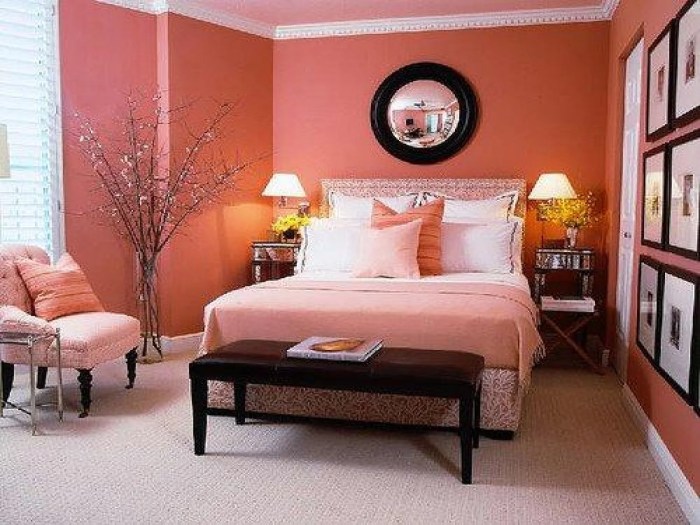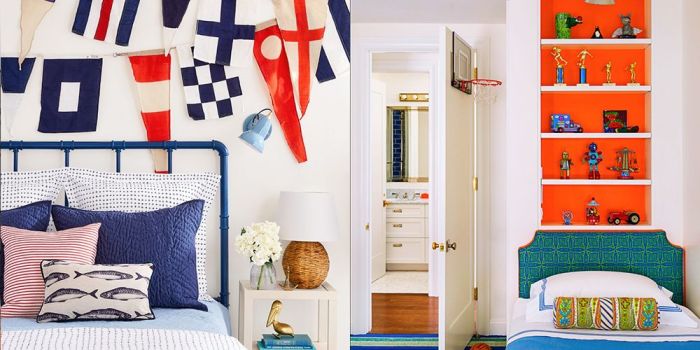How to Decorate Room Colour Tips for a Vibrant and Cozy Space
Choosing the Right Color Palette

How to decorate room colour – When it comes to decorating your room with color, one of the most important aspects to consider is choosing the right color palette. The colors you choose will set the tone for the entire room and can have a significant impact on the overall feel and ambiance. Consider the mood you want to create in the room – do you want it to be calming and relaxing, or vibrant and energizing?
One popular approach is to use a color wheel to help you choose complementary colors that work well together. Complementary colors are opposite each other on the color wheel and create a dynamic and visually appealing contrast when used together. For example, pairing blue with orange or purple with yellow can create a striking look.
Adding Accent Colors: How To Decorate Room Colour
Once you have chosen your main color palette, you can add accent colors to bring depth and interest to the room. Accent colors are typically used in smaller doses and can be introduced through accessories such as throw pillows, curtains, rugs, and artwork.
When selecting accent colors, look for shades that complement your main color palette while adding a pop of contrast. For example, if your main color scheme is neutral with shades of beige and gray, you could add accents of mustard yellow or teal for a touch of color.
When it comes to decorating a kids’ room, it’s important to create a space that is fun, colorful, and functional. You can start by choosing a theme that your child loves, whether it’s superheroes, princesses, or animals. Incorporate bright colors and playful patterns to bring the room to life. Don’t forget to add storage solutions to keep the space organized and clutter-free.
For more tips on how to decorate a kids’ room, check out this helpful guide: how to decorate a kids room.
Creating Balance
When decorating with color, it’s important to create a sense of balance in the room. This can be achieved by distributing color evenly throughout the space and using a mix of light and dark shades to create contrast. For example, if you have a bold statement wall in a bright color, balance it out with neutral furniture and accessories to prevent the room from feeling overwhelming.
Another way to create balance is to use the 60-30-10 rule, which involves dividing the colors in the room into percentages. 60% of the room should be a dominant color, 30% a secondary color, and 10% an accent color. This helps create a cohesive and harmonious look.
Adding Texture and Patterns
Incorporating texture and patterns into your color scheme can add depth and visual interest to the room. Textured fabrics such as velvet, linen, and wool can bring warmth and coziness, while patterns like stripes, florals, and geometric designs can create a sense of movement and energy.
Are you looking for ideas on how to decorate a kids room ? Creating a fun and functional space for your little ones can be exciting. Consider using colorful wall decals, versatile storage solutions, and themed bedding to bring their room to life. Don’t forget to involve your kids in the decorating process to make it a collaborative and enjoyable experience for everyone!
When mixing textures and patterns, be mindful of the scale and balance. For example, if you have a large floral print on your curtains, pair it with a smaller geometric pattern on your throw pillows to create a harmonious look.
Utilizing Lighting

Lighting plays a crucial role in how color is perceived in a room. Natural light can enhance the vibrancy of colors, while artificial light can alter the way colors appear. When choosing colors for your room, consider the amount and direction of natural light it receives throughout the day.
Warm-toned light bulbs can enhance warm colors like reds and yellows, while cool-toned bulbs can complement cool colors like blues and greens. Experiment with different lighting sources and placements to see how they affect the colors in your room.
Conclusion

In conclusion, decorating your room with color is a creative and fun process that can transform the look and feel of your space. By choosing the right color palette, adding accent colors, creating balance, incorporating texture and patterns, and utilizing lighting effectively, you can create a room that reflects your personal style and enhances your living experience.
Frequently Asked Questions
1. How do I choose the right color palette for my room?
To choose the right color palette, consider the mood you want to create and use a color wheel to find complementary colors that work well together.
2. What are accent colors and how should I incorporate them?
Accent colors are used in smaller doses to add depth and interest. They can be introduced through accessories like throw pillows, curtains, rugs, and artwork.
3. How can I create balance in my room with color?
You can create balance by distributing color evenly, using a mix of light and dark shades, and following the 60-30-10 rule for color percentages.
4. Why is texture and pattern important when decorating with color?
Texture and pattern can add depth and visual interest to the room, creating a more dynamic and engaging space.
5. How does lighting affect the way color is perceived in a room?
Lighting can enhance or alter the way colors appear, so it’s important to consider natural and artificial light sources when choosing colors for your room.



